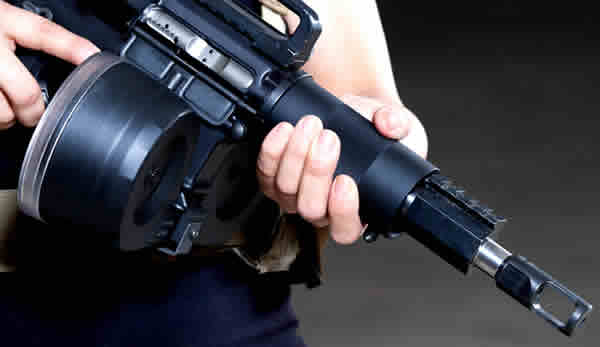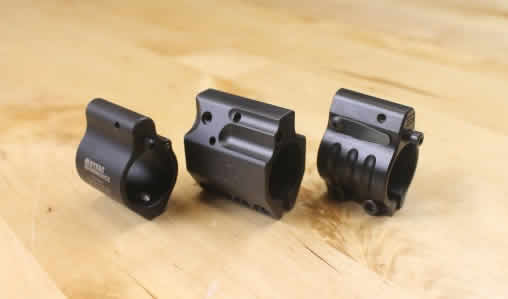
Have Gun will Travel (part 1)
Seven things to consider before you transport your firearms on commercial airlines.
Story and Photos by Nick PernaAs a cop, I’m always amazed and frustrated by how complex firearms laws are. Most laws are relatively simple. For example, to commit the act of robbery, you need to permanently deprive (i.e. steal) something from someone using force or fear. It’s essentially A+B=C.
In contrast, firearms laws, at the local and state level, are never this easy. Barrel lengths, magazine capacities and concealed carry regulations are mind-numbingly complicated. This is primarily due to the fact that people who don’t have any idea what end the round comes out of – namely politicians – draft and codify these laws.
One area that deserves attention is transporting firearms from one place to another. What is legal in one state can be illegal in another. I live in “Commiefornia,” which is bordered by the gun-friendly state of Nevada.
A person can become an instant felon by driving west through Tahoe (a city with parts in both California and Nevada) if they are stopped by California law enforcement and have a “prohibited weapon” in their possession. It was cool to have in Nevada, just not west of there. In this article, I’m going to focus on flying with firearms; next month, I’ll talk about shipping them.

KNOW YOUR LIMIT. Some carriers limit the number of firearms that you can transport. I recently researched JetBlue’s policies for shipping firearms. They limit you to two handguns and four long guns (rifles or shotguns). This is important to know. Say you’ve planned a once-in-a-lifetime hunting trip with a group of five friends and you agree to transport all their firearms. Imagine your chagrin when you are told at the ticketing counter that you are two over your limit! Who doesn’t get to use their gun? (Probably you and the guy you like the least.) More importantly, what do you do with the two extra long guns now that you are at the airport? A simple check of airline policies would have prevented this.
Now here’s the scary part. Regarding the plastic box that was deemed unsuitable by the ticketing agent: I had used it to transport handguns on that same airline and others no less than 20 times! This story is a clear example of the issues you can face when trying to transport a firearm.
Also, I’d recommend a gun box with a combination lock on it. That way you don’t have to concern yourself with losing a key. If you’re over 50 (like me), use a simple number you can remember (that rules out your wedding anniversary). Also, although it’s generally not required, use a locking device on the firearm itself that prevents it from chambering a round. Most guns come with one of these when you purchase them.
For ammo, keep it in the original box and place it in a locked box separate from the firearm. Many carriers like it to be in the box you purchased it in. Some airlines limit the number of rounds you can transport by number or weight. Make sure you stay in compliance.
Remember, most airlines would prefer that passengers don’t attempt to transport any firearms at all on their aircraft. It’s a privilege, not a right. It’s best to go into these situations with that frame of mind.

KNOW WHERE TO GO. Oftentimes when checking a firearm, you will bypass the ticket kiosks and go directly to the ticketing counter first to notify the ticketing staff. Verbiage is key here. Avoid saying something like, “I have a gun!” A better option is, “I have a firearm(s) in my baggage that I want to check in.” See the difference?
Once you have declared this, be prepared for whatever comes next and be flexible. Some ticketing agents will want to see the firearm; others won’t. They will always want you to open the case to put the necessary paperwork in the box. Some will then take the bag and have you wait until they get a clearance phone call from TSA. Others will escort you and your bag to TSA to have it inspected. Recently while flying out of JFK in New York, I stood by until an officer with New York’s Port Authority met me at the counter and inspected my firearm.
Be respectful of these folks too. It’s pretty unlikely that you would have an adult beverage prior to going to the ticket counter, but if you are that type of person, it will probably look bad if you are dealing with TSA or a law enforcement agent with alcohol on your breath.

Also, be careful when having your range bag double as your carry-on bag. Besides the obvious concern about leaving ammo and weapons inside unintentionally, you also have to be concerned about gunshot residue on the bag itself. Ever see TSA staff swab the outside of a bag with an item similar to an alcohol prep pad? Trust me, they aren’t being helpful, trying to clean up a ketchup stain. They’re drawing samples to be analyzed for explosives residue. Gunpowder falls into that category.
BE WARY OF STICKY FINGERS. Stuff gets stolen at airports all the time – rental cars, luggage, you name it. That’s why almost every airport in the US has a law enforcement agency assigned to work there. Guns get stolen a lot. Do what you can to make your gun case less obvious. Transport handguns in lock boxes inside your normal checked baggage. Record serial numbers of guns you are shipping. When I travel, I take a picture of: A) the firearm serial number; B) the lock box; and C) my luggage. I do this in case I have to file a police report for a lost or stolen firearm. Consider putting a GPS tracker in the lock box. Have your contact info on it too.
Make sure you check inside the lock box to confirm your weapon is there as soon as it comes off the carousel at your final destination. Also, don’t fly with expensive guns or family heirlooms if you can avoid it. Finally, you must weigh the need to be armed after you retrieve your bags with causing a firearms incident at an airport. It can be a potentially disastrous situation if you are seen by someone loading rounds into a magazine or racking a slide to chamber a round. I usually try to do this in a handicap stall in the airport bathroom, but be advised, this is not without its risks either.
Bottom line: When flying with firearms, it will be a bumpy ride, so be prepared for every eventuality. Next month, in part two of this series, I’ll discuss shipping guns through the post office, UPS, FedEx, FFL holders and other avenues





